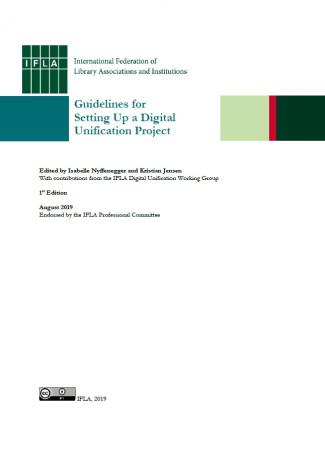IFLA Guidelines for Setting Up a Digital Unification Project

“Libraries and archives throughout the world hold collections and individual collection items which are of great cultural importance to people everywhere. They document the inextricable interconnectedness of human history and very often gain in meaning and significance if they can be associated with collections held elsewhere. Technological advances of the past decades now make it possible to bring together collections giving digital access to citizens and researchers wherever they may be, joining up cultural heritage which from a variety of points of view can be understood as belonging together, historically or intellectually, thematically or aesthetically.
IFLA and UNESCO are aware of the alarming state of preservation of much documentary heritage and the precariousness of access to documentary heritage in various regions of the world, as well as the fact that documentary heritage provides crucial support for the constitution, transmission and dissemination of the collective knowledge and memories of people worldwide… Libraries, well aware of the fragility of the documentary heritage in their custody and the risks of losing the associated information sources, are the first to have made the digital preservation of this heritage a central objective. Starting from the 2000s, one can see the emergence of digital unification projects, which were primarily national in nature. Gradually, the projects have diversified and extended to the gathering of either dispersed collections or collections relating not only to a national community, but also to communities sharing a language, religion, culture or history (colonial past, war, alliances and treaties, commercial routes, …). From 2010 onwards, initiatives began to take into account the need to enhance these digital sets, through contextualisation and mediation promoting the transmission and understanding of this documentary heritage for future generations.” (p.4-5)
“These guidelines are intended for anyone contemplating or planning a digital unification project, in particular in a library, archive or other heritage institution. It should not require any particular experience of such initiatives, technical expertise or resources, but should provide a helpful guide and checklist to anyone engaging in digital unification work.” (p.6)
